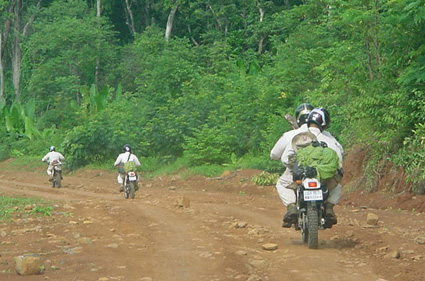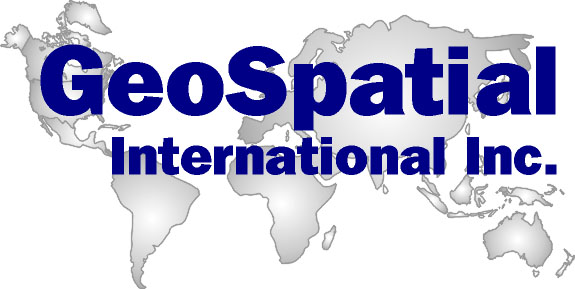3.3 Survey Operations and Logistics
Operations plans were developed prior to each survey deployment. Deployment phases were on average twenty-two days in length, with eight to ten day stand-down period between deployments. During the stand-down periods advance field reconnaissance activities were undertaken. These activities included obtaining permission from provincial authorities and establishing one or more mobile field offices in locations central to the upcoming deployment. The rental of team accommodations and the negotiation of service contracts for vehicle maintenance and fuel, and surveyor meals and laundry services required for the next deployment phase were undertaken by the logistics coordinator during the stand-down period following the previous deployment
(see Operations and Logistics Annex).

Field accommodations arranged by Logistics Coordinator
The Assistant Field Manager assigned districts and communes to be surveyed by each team during the upcoming deployment. Team Leaders in turn assigned the specific villages to be surveyed by each 2-surveyor detachment during the upcoming deployment phase. Contingency plans were developed if the advance reconnaissance identified conditions (ie. severe flooding) or issues (ie. commune election related security problems) that might impact survey activities. Contingency plans consisted of detailed deployment procedures for safe and efficient redeployment of the teams into more secure or accessible areas within the same province or adjacent provinces.
In most cases, teams were assigned districts and communes to survey that were within approximately thirty kilometers of their accommodations and a mobile field office. For security and logistics reasons, effort was made to conduct survey operations in such a manner that detachments and team leaders worked in close proximity to each other within the same sector of the larger deployment area. Effort was also made such that all surveyors were able to return to the team accommodation every evening.
In some of the more remote and inaccessible parts of the country (Aoral district of Kampong Speu province, Veal Veng district of Pursat province, Koah Kong province, Prey Vihear province, Steung Treng, Rattanak Kiri and Mondol Kiri Provinces) villages are widely dispersed. In these areas, teams were at times not assigned fixed accommodations. Instead, they moved as a group sweeping across their designated survey areas with each detachment obtaining accommodations in the villages along their routes or regrouping as a team in a central location and obtaining accommodations in local hotels or Pagodas.

Unpaved roads and dense jungle are not uncommon sights
Detachments of teams that completed surveying in their assigned areas ahead of schedule were redeployed to assist those teams with the most villages left to survey at that time. This procedure allowed for all areas to be completed on or before schedule.
In densely populated areas such as in Takeo, Kandal and Prey Veaeng Provinces, each of the teams surveyed approximately 300 villages per deployment. In less densely populated areas such as Koah Kong, Prey Vihear, Stueng Treng, Mondul Kiri and Rattanak Kiri Provinces, where distances between villages was greater, approximately 200-250 villages were surveyed by each team per deployment.
In highly contaminated areas such as Banteay Meanchey and Battambang Provinces and Krong Pailin, team production was approximately 120-150 villages per deployment. This reflects the additional time required to collect and document all relevant data in areas of severe contamination where multiple contaminated areas impacted on a single community.
Most provinces were characterized by a mix of the different types of situations. In assigning new deployments, management aimed to maximize overall productivity and quality of work and to minimize health and safety concerns due to fatigue by assigning teams areas of different required levels of effort. For example, if a team had just completed a difficult deployment in an area of long distances between villages, poor road conditions and a requirement to spend nights in small remote villages, effort was made such that their next deployment was along a main road with short distances between villages and a relatively comfortable team accommodation close by.
The deployment plan for the entire survey
(Annex 12) shows the planned time to be taken for each province, the standown periods, and re-deployment times between provinces. This deployment plan was followed closely until the flooding that occurred in September 2001, after which the sequence of provinces was changed to reflect areas that were accessible. However, the total time taken to survey each province closely followed this deployment plan.
Progress Reports
Team leaders reported by mobile phone, HF or VHF radio to the mobile field office on a daily basis. Their reports included information on villages surveyed and any conditions or issues that might impact on survey operations (e.g. vehicle and motorcycle maintenance requirements, illnesses or injuries, road and access conditions and security issues).
The daily reports given by team leaders were compiled weekly by the Assistant Field Manager and submitted to the Field Manager every week. Contents of the reports included number of villages surveyed, number of villages remaining to be surveyed, the nature of mine and UXO contamination encountered, truck and motorcycle maintenance, vehicle accidents, surveyor illnesses and sicknesses, surveyor leaves of absence, security issues, miscellaneous issues and the following week's planned survey activities and objectives.
The Field Manager submitted a weekly report to the Project Manager summarizing the information provided from the field and a preliminary analysis of the level and nature of mine and/or UXO contamination encountered during the week. Weekly field reports were compiled into a monthly report at the end of each calendar month and submitted to the Project Manager.








